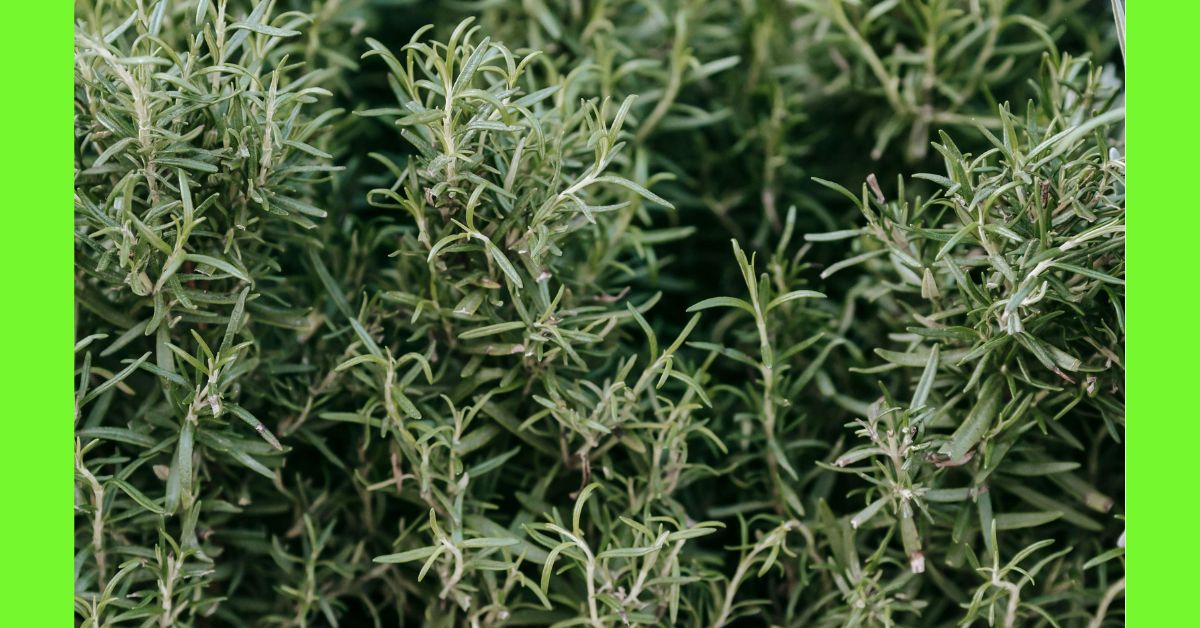How to Plant Rosemary in Nigeria

Rosemary (Rosmarinus officinalis) is a versatile herb cherished for its aromatic qualities, medicinal properties, and culinary uses.
As a resilient and evergreen plant, rosemary thrives in warm climates, making it an excellent option for Nigerian farmers and gardeners.
In this article, we’ll explore everything you need to know about planting rosemary in Nigeria, from understanding the plant to managing pests and diseases.
Description of a Rosemary Plant
Rosemary is a perennial, evergreen shrub with fragrant needle-like leaves.
Its leaves are dark green on top and silvery-white underneath, and it produces small flowers that range in colour from pale blue to pink or white.
Native to the Mediterranean region, rosemary thrives in hot, sunny conditions and is well-suited for Nigeria’s tropical climate, particularly in areas with minimal rainfall.
The plant can grow up to 1–2 meters in height if left untrimmed.
It is drought-tolerant and requires well-drained soil to flourish.
Rosemary is not only used in cooking but is also valued in traditional medicine for its anti-inflammatory and antioxidant properties.
It is also an ornamental plant that can enhance garden aesthetics.
Planting Season for Rosemary in Nigeria
In Nigeria, rosemary planting is best done during the dry season or the early part of the rainy season. These periods provide ideal conditions for germination and growth.
- Dry Season (November to March): If you plan to plant rosemary during this time, ensure the soil is irrigated regularly to provide adequate moisture.
- Early Rainy Season (April to June): This is often the preferred period as the rains provide natural moisture for growth. However, areas with heavy rains should avoid overwatering to prevent root rot.
The warm temperatures and sunlight during these periods are conducive to rosemary’s growth, making it easier for the plant to establish its roots.
Planting Rosemary
Step 1: Choose a Location
Rosemary thrives in locations with plenty of sunlight. When selecting a site:
- Look for areas that receive 6–8 hours of direct sunlight daily.
- Ensure the location has well-draining soil, as rosemary cannot tolerate waterlogged conditions.
- Avoid shaded areas, as inadequate sunlight reduces growth and essential oil production in the leaves.
If growing rosemary in pots, position the pots in sunny spots like verandas, balconies, or open gardens.
Step 2: Land Clearing and Preparation
Once the location is selected:
- Clear the land: Remove weeds, rocks, and debris to prevent competition for nutrients and water.
- Loosen the soil: Use a hoe or spade to loosen the top 15–20 cm of soil to improve aeration and drainage.
- Amend the soil: Rosemary prefers slightly acidic to neutral soil (pH 6.0–7.5). Add compost, sand, or well-rotted manure to improve soil fertility and drainage.
Step 3: Means of Propagation
Rosemary can be propagated through:
- Seeds: Ideal for larger-scale planting but takes longer to germinate.
- Stem cuttings: A faster and more reliable method, often preferred by gardeners.
- Layering: Involves bending a stem to the ground and covering it with soil until it roots.
Step 4: How to Plant Rosemary from Seed
Growing rosemary from seed requires patience, as the germination process is slow and may take 2–4 weeks. Follow these steps:
- Prepare the seeds: Soak rosemary seeds in warm water for 6–12 hours to improve germination.
- Plant the seeds:
- Use seed trays, pots, or directly sow in the prepared soil.
- Place the seeds 0.5 cm deep and cover lightly with soil.
- Spacing: Maintain a spacing of 30–40 cm between plants to allow proper growth and air circulation.
- Provide moisture: Water the soil gently but avoid overwatering. Keep the soil slightly moist until germination occurs.
- Transplant: Once seedlings reach a height of 5–7 cm, transplant them to their final growing spot.
Step 5: Watering
Rosemary requires moderate watering:
- Water young plants 2–3 times a week until they are established.
- Mature plants only need watering once or twice a week, especially during the dry season.
- Avoid overwatering to prevent root rot. Allow the topsoil to dry out slightly before the next watering session.
Step 6: Apply Manure
To ensure healthy growth:
- Apply organic compost or well-rotted manure to the soil during planting.
- Top-dress with additional manure or a balanced fertilizer (e.g., NPK 10-10-10) every 6–8 weeks to replenish nutrients.
- Avoid over-fertilizing, as this may lead to excessive leaf growth at the expense of aromatic oils.
Maturity and Harvest
Rosemary plants take approximately 6–12 months to mature, depending on the propagation method and growing conditions. Here’s how to harvest rosemary:
- Begin harvesting once the plant reaches 15–20 cm in height.
- Use pruning shears to cut the top 5–10 cm of stems. This encourages bushier growth.
- Avoid over-harvesting; leave at least two-thirds of the plant intact to allow continued growth.
- For the best flavour, harvest in the morning after the dew has dried but before the sun becomes too hot.
Fresh rosemary can be used immediately or dried for later use. To dry, hang the stems in a cool, shaded area with good ventilation.
Pests and Diseases
While rosemary is relatively resistant to pests and diseases, a few issues may arise:
Common Pests:
- Aphids: Small, sap-sucking insects that weaken the plant.
- Spider mites: Tiny pests that create webbing on leaves and stems.
- Whiteflies: These insects cause yellowing and stunted growth.
Common Diseases:
- Root Rot: Caused by overwatering or poorly drained soil. Symptoms include yellowing leaves and wilting.
- Powdery Mildew: A fungal disease that appears as white powdery spots on leaves.
- Leaf Spot: Fungal or bacterial infections that cause brown or black spots on leaves.
Pest and Disease Control
To protect your rosemary plants from pests and diseases, follow these tips:
Pest Control:
- Manual Removal: Handpick visible pests or use a strong water spray to dislodge them.
- Neem Oil: Apply a diluted neem oil solution to control aphids, mites, and whiteflies.
- Companion Planting: Grow rosemary alongside pest-repellent plants like marigolds to reduce infestations.
Disease Control:
- Prevent Root Rot: Avoid overwatering and ensure proper drainage.
- Remove Infected Parts: Prune diseased leaves and stems promptly to prevent the spread of fungi or bacteria.
- Fungicides: Use organic fungicides or a mixture of baking soda and water to combat powdery mildew.
Conclusion
Planting rosemary in Nigeria can be a rewarding endeavour, given its culinary, medicinal, and economic benefits.
By understanding the plant’s requirements and following the steps outlined above, you can grow healthy rosemary plants either for personal use or commercial purposes.
Proper care, including regular watering, manure application, and pest management, will ensure a thriving rosemary garden that yields a bountiful harvest year-round.
I hope this article was helpful.
Is there any crop you want to grow and can’t find in our How to Grow category?
Let us know; leave a note in the comment box below.






